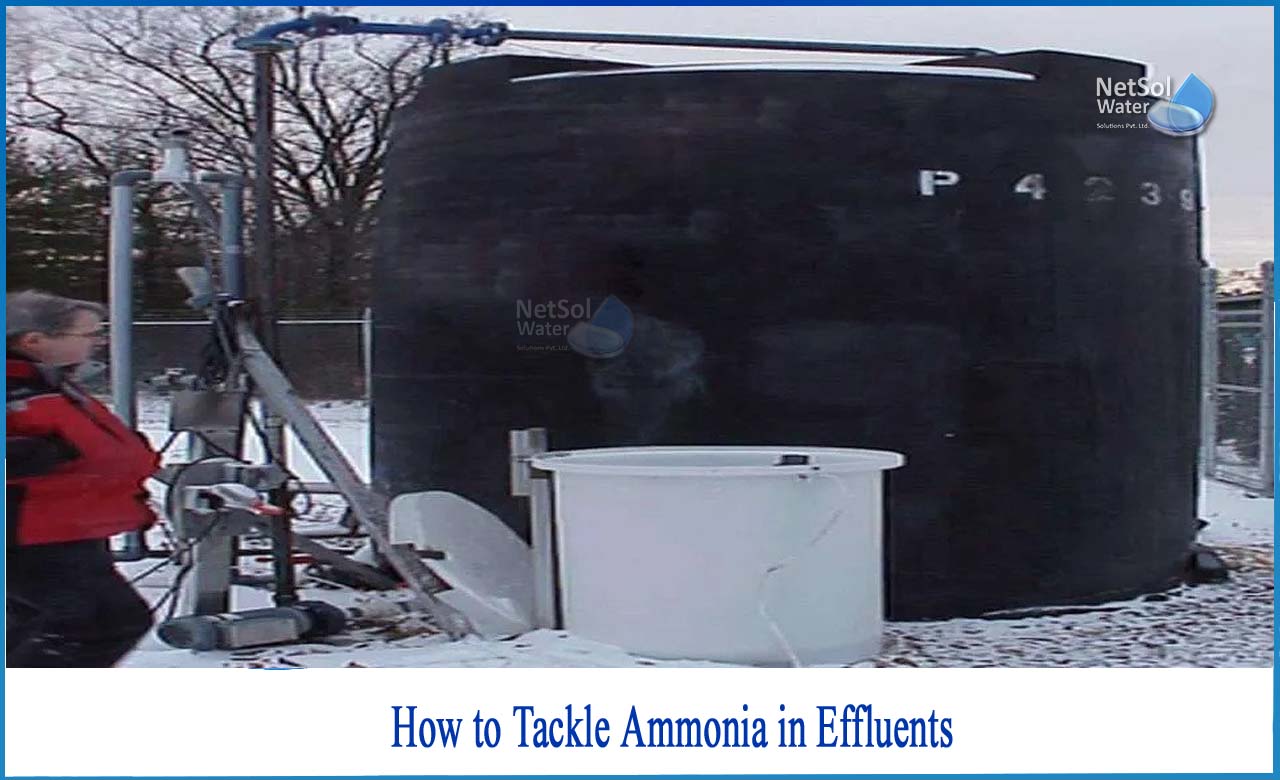Overview
Water quality has become increasingly important in recent years as a result of limited water resources and increased industrialisation. One of the most prevalent pollutants found in industrial and agricultural effluents is ammonia. It is utilised in the chemical industry as a bleaching agent, as well as in the production of fertilisers, polymers, and explosives.
Ammonia and ammonium ions are in balance in effluents. The concentration of ammonia gas rises as the pH and temperature rise. The majority of the ammonia in the effluent is dissolved ammonium ions at neutral pH, but when the pH rises to 12, both ammonium ions and gaseous ammonia coexist. Ammonia in effluents is often measured using Nessler's method and expressed as ammonical nitrogen in parts per million (ppm).
Although ammonia is a naturally occurring compound and an important macronutrient for plant growth, at higher concentrations it is toxic to aquatic life. The presence of gaseous ammonia in effluent can cause utility lines to corrode and emit a foul pungent odour in the area. As a result, regulatory agencies all over the world have expressed their worry about the dangers of abnormal discharge of effluents containing high quantities of ammonia. As a result, it is critical to solve this issue before an ecological crisis occurs.
Role of Wastewater Ammonia Treatment
In addition to the agricultural endeavour, the agencies are concerned about sewage wastewater treatment plant outputs. Despite the fact that treated effluent is a much lesser source of ammonia, lowering the amount of wastewater treatment discharge can significantly lower total ammonia and nitrogen levels below critical load thresholds.
Traditionally, the process was carried out in basins with large tanks.
Many treatment plants are too small to handle the amount needed, and attempting to do so by increasing sludge concentrations and sludge residence, might result in other issues. There may also be a need for settling tanks to remove the germs.
Some older treatment plants use horizontal sand bed filters, which allow bacteria to settle on the solid surfaces of the sand, resulting in significantly higher concentrations than in open tanks and a larger surface area for action. However, these plants take up a lot of room and require equipment for dispersing raw fluids that must be maintained. Furthermore, these have a limited usable life and may incur significant costs if the filter beds get clogged and must be dug up, disposed of, or even abandoned.
What are the common methods used for tackling ammonia in effluents?
Physical (ammonia stripping), chemical (oxidising agents), ion exchange, and biological (Nitrosomonas/Nitrobacter) procedures are commonly used.
1: Ammonia Stripping:The removal of ammonia from effluents takes place in a modified cooling tower. The effluent's pH is maintained above 9 and it is passed through a packed column with a Spurger. The column is constantly sprayed with high-pressure air, and the temperature is kept at 120°F. The created air current carries the gaseous ammonia out of the effluent system. The efficiency of the operation is strongly reliant on the system's temperature, which necessitates a significant financial investment in utility maintenance.
2: Agents of Oxidation:Treatment with oxidising chemicals to remove ammonia is frequently used in settling tanks after subsequent treatments. One of the most popular reagents used to oxidise ammonia in effluents is sodium hypochlorite. Due to the intrinsic toxicity of these chemicals, however, strict application monitoring is essential.
3: Chromatography by ion exchange:The effluent is passed through zeolite packed columns in ion-exchange chromatography for ammonia removal. Clinoptilolite (a kind of Zeolite) has a strong affinity for NH4+ ions, allowing it to scavenge all residues of the pollutant in the effluent. The ammonium sulphate recovered after treatment can be utilised as chemical fertiliser, while the treated water can be recycled for irrigation in agricultural fields. The sole disadvantage of this method is the high cost of column regeneration and disposal of leftover wastes.
4: Microbial augmentation:In effluents, biological ammonia removal can be aerobic or anaerobic. In aerobic processes, two groups of bacteria convert ammonia/ammonium ions (NH4+) to atmospheric nitrogen in a sequential manner.
The first group of bacteria is known as Nitrifying Bacteria, and it includes bacteria such as Nitrosomonas, Nitrococcus, and others. These bacteria convert dissolved ammonium ions to nitrites, which are then transformed to nitrates, thanks to their sophisticated enzyme machinery.
The second group of bacteria is known as Denitrifying Bacteria and includes Micrococcus, Pseudomonas, and other bacterial species. Under low oxygen circumstances, these bacteria convert nitrates to nitrogen in the atmosphere. As a result of the combined action of both nitrifying and denitrifying bacteria, the effluent is completely free of ammonia.
5: Anaerobic Ammonia Oxidation:Anaerobic ammonia oxidation is a process that converts ammonia to atmospheric nitrogen in an anaerobic environment. Because these bacteria are sluggish growers with a 10-day generation time, they are usually cultivated in a sequential batch reactor.
Kuenenia stuttgartiensis and Anammoxoglobus are two examples of anammox bacteria. As a result, microbial supplementation improves effluent ammonia removal efficiency. Microbial growth makes use of native organic matter for biomass development, which has the added benefit of decreasing COD and ammonia nitrogen levels in the effluent.
Conclusion
There are numerous techniques for resolving the problem of ammonia in wastewater, but microbial augmentation is the greatest option for obtaining outcomes that will meet the needs of the hour.
Netsol Water is Greater Noida-based leading water & wastewater treatment plant manufacturer. We are industry's most demanding company based on client review and work quality. We are known as best commercial RO plant manufacturers, industrial RO plant manufacturer, sewage treatment plant manufacturer, Water Softener Plant Manufacturers and effluent treatment plant manufacturers. Apart from this 24x7 customer support is our USP. Call on +91-9650608473, or write us at enquiry@netsolwater.com for any support, inquiry or product-purchase related query.



